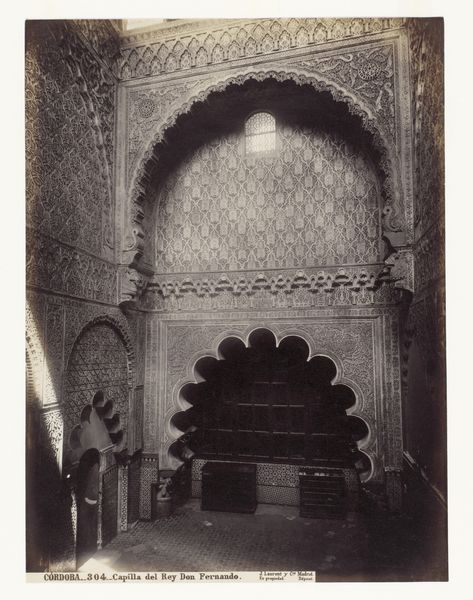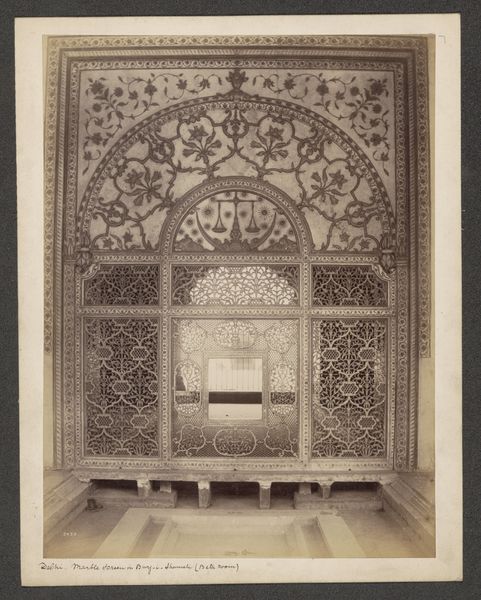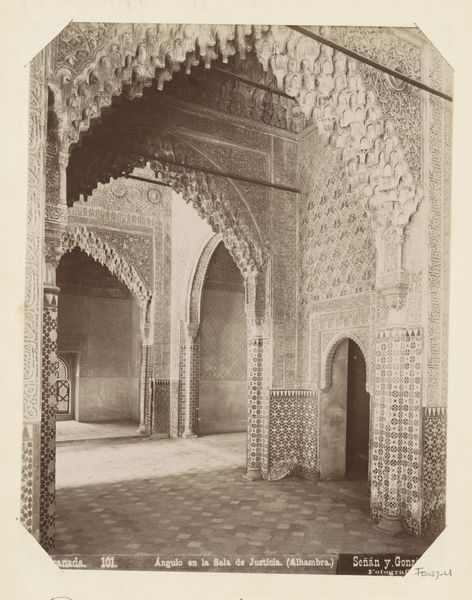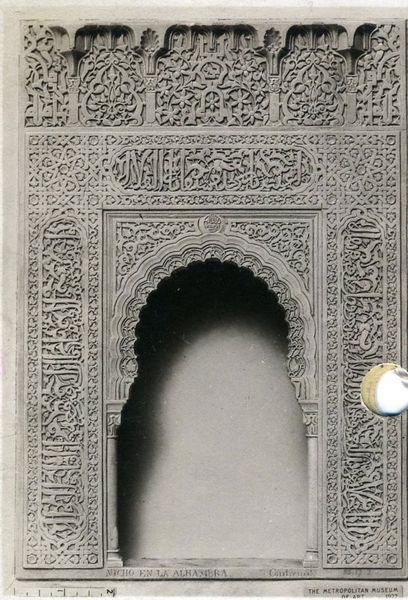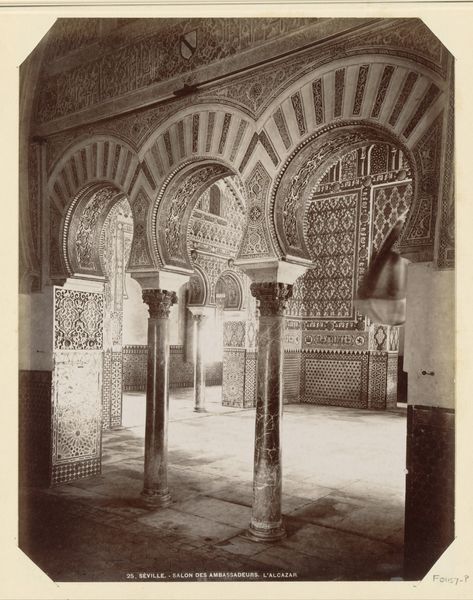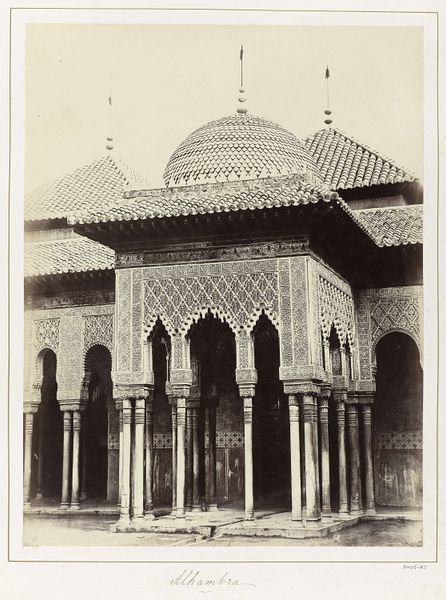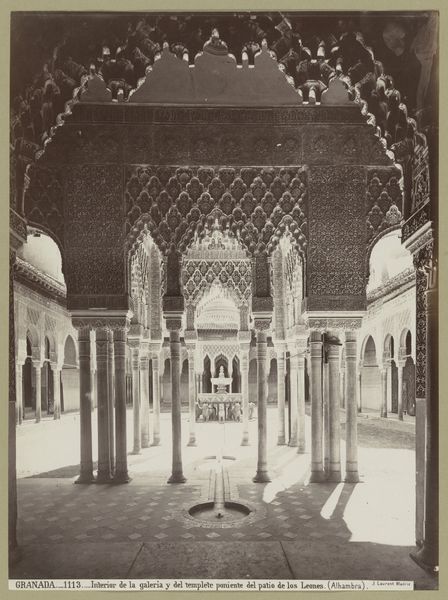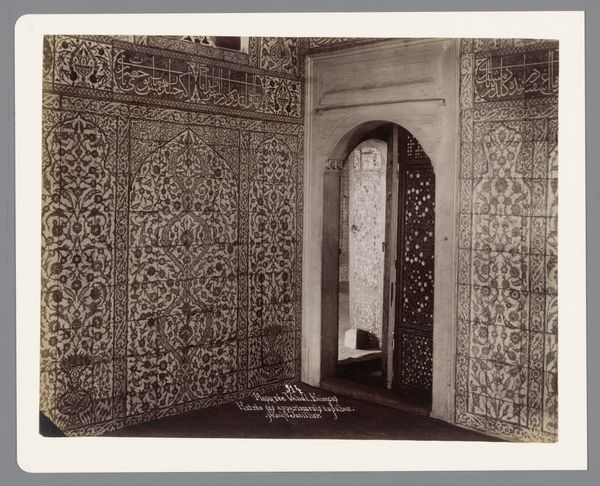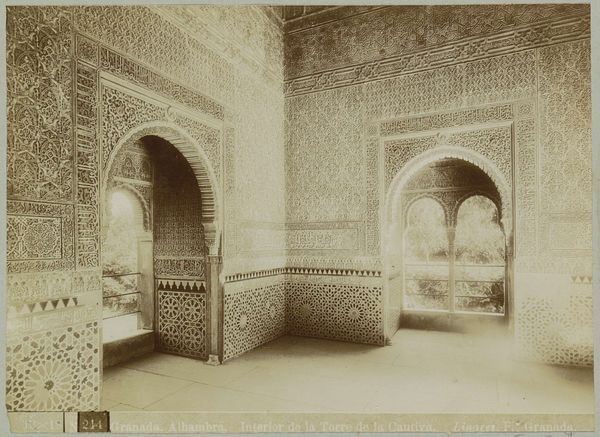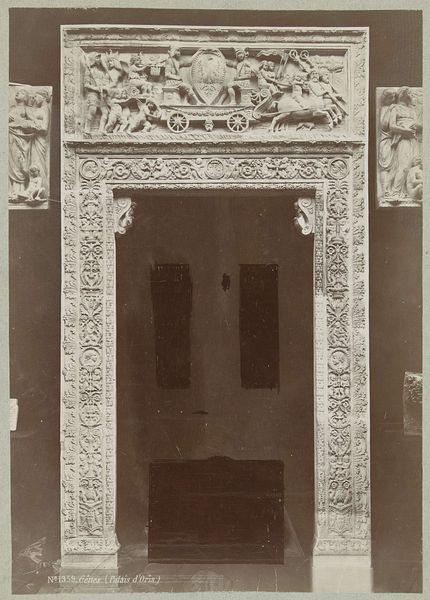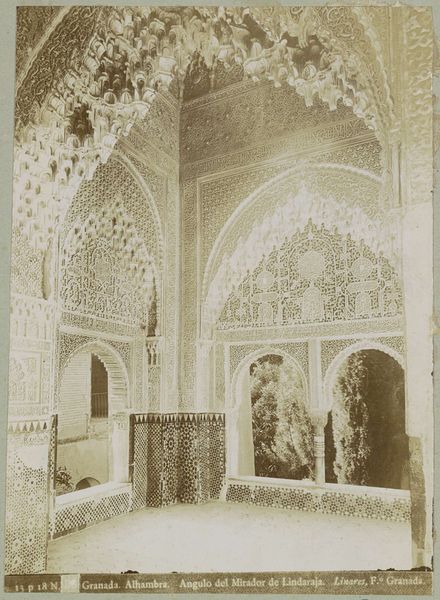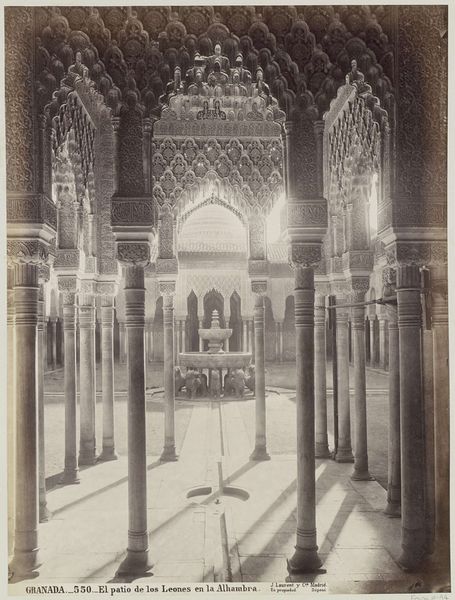
The screen enclosing the sarcophagi in the interior of the Taj Mahal, Agra, Uttar Pradesh, India 1865 - 1866
0:00
0:00
silver, photography, architecture
#
silver
#
landscape
#
traditional architecture
#
photography
#
geometric
#
19th century
#
islamic-art
#
architecture
Dimensions: height 273 mm, width 202 mm
Copyright: Rijks Museum: Open Domain
This is a photograph by Samuel Bourne, depicting the screen enclosing the sarcophagi in the interior of the Taj Mahal. The Taj Mahal, constructed primarily of white marble, showcases the extraordinary skills of stonecutters and carvers. The screen, intricately pierced and adorned with floral motifs, stands as a testament to the ways in which material and process converge. The marble’s inherent qualities—its smooth texture, cool weight, and brilliant color—are fully exploited here. Consider the sheer amount of labor involved in quarrying, transporting, and shaping the stone. While Bourne's photograph captures the screen's aesthetic beauty, we should also consider the hands that shaped it. The Taj Mahal is not just a monument of love, but also a monument to labor, a confluence of art, craft, and the wider social context of its creation.
Comments
No comments
Be the first to comment and join the conversation on the ultimate creative platform.

